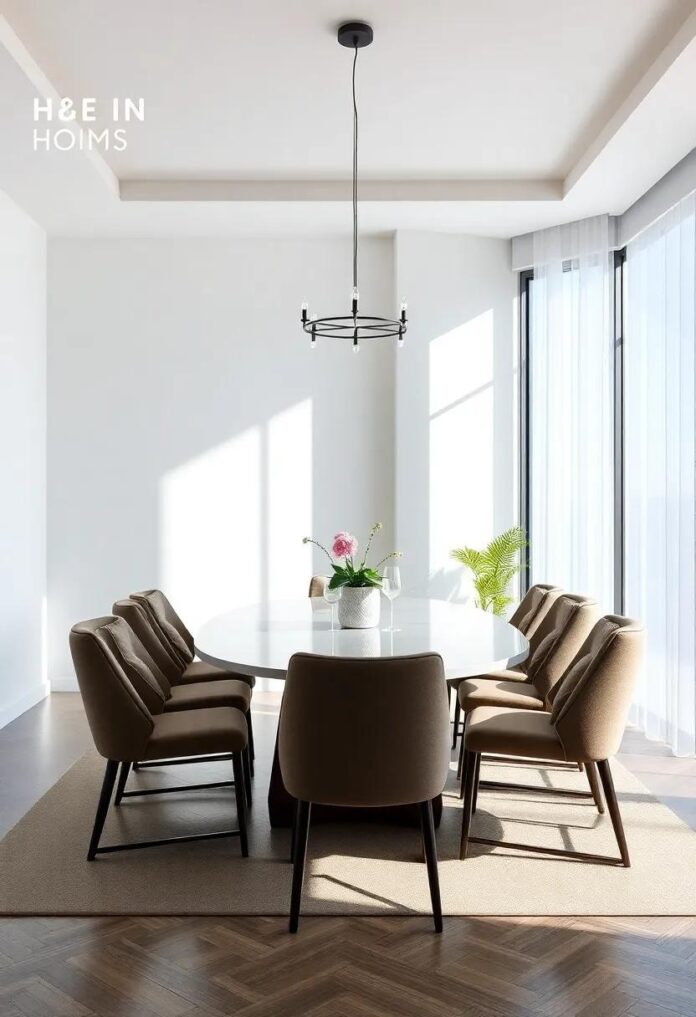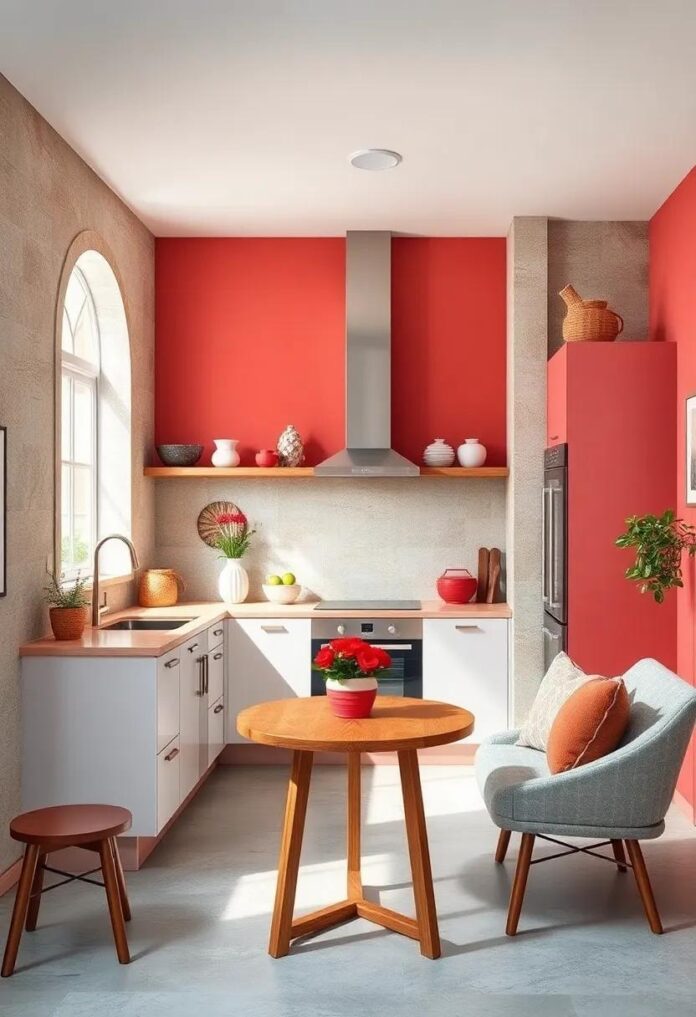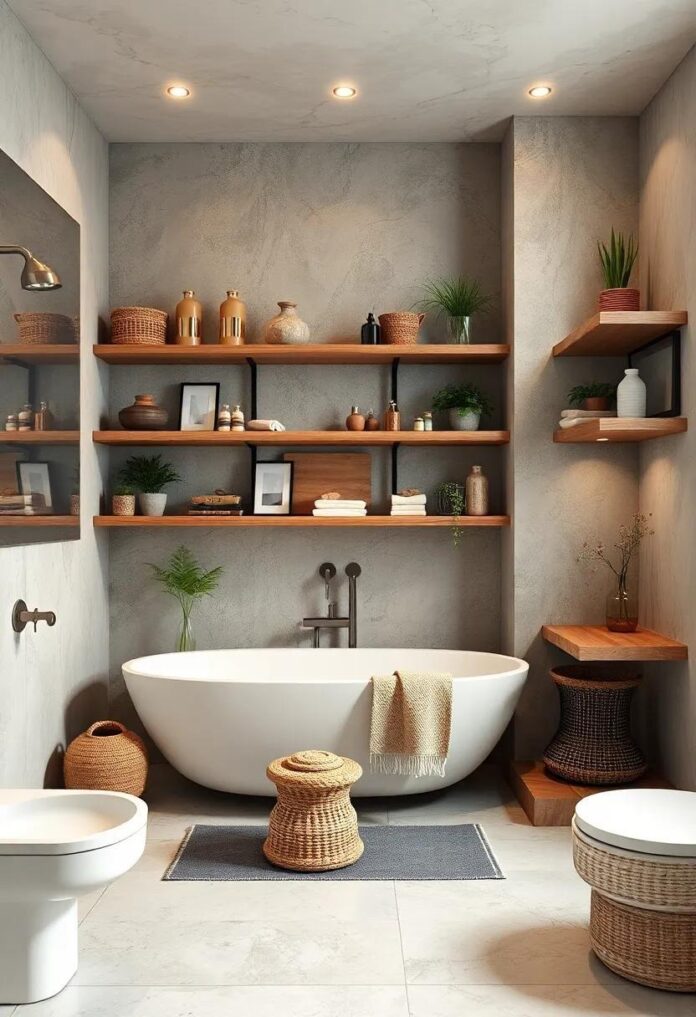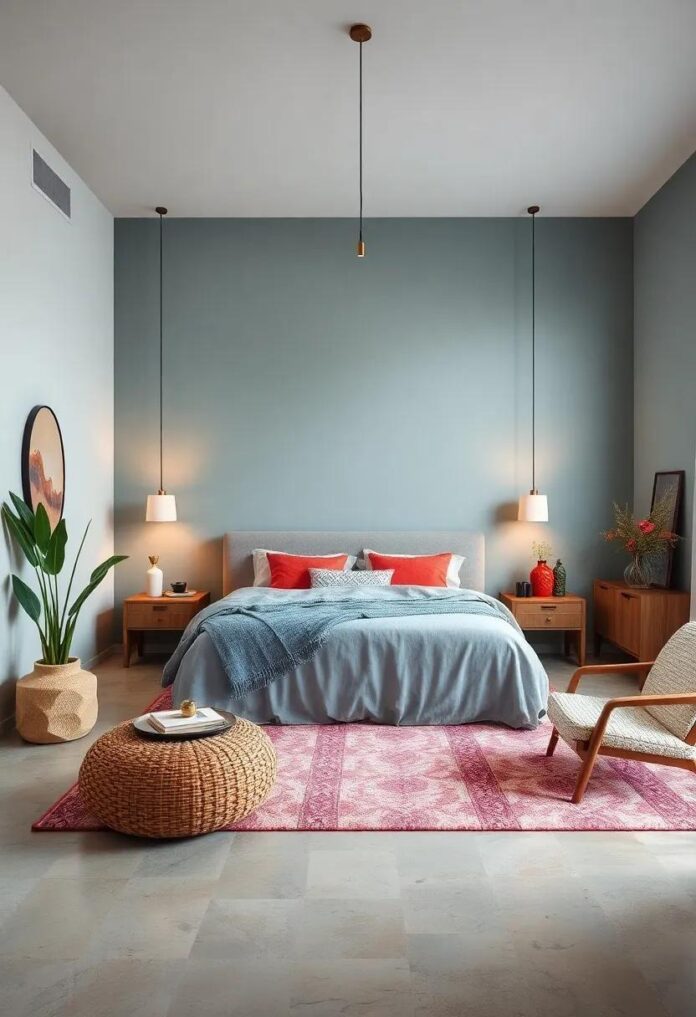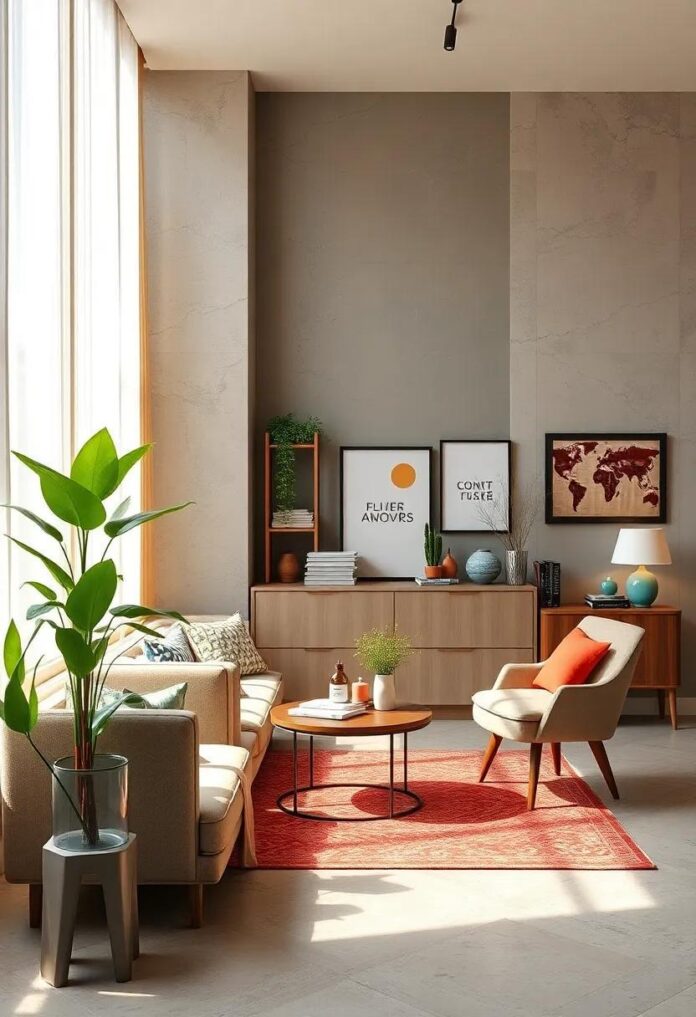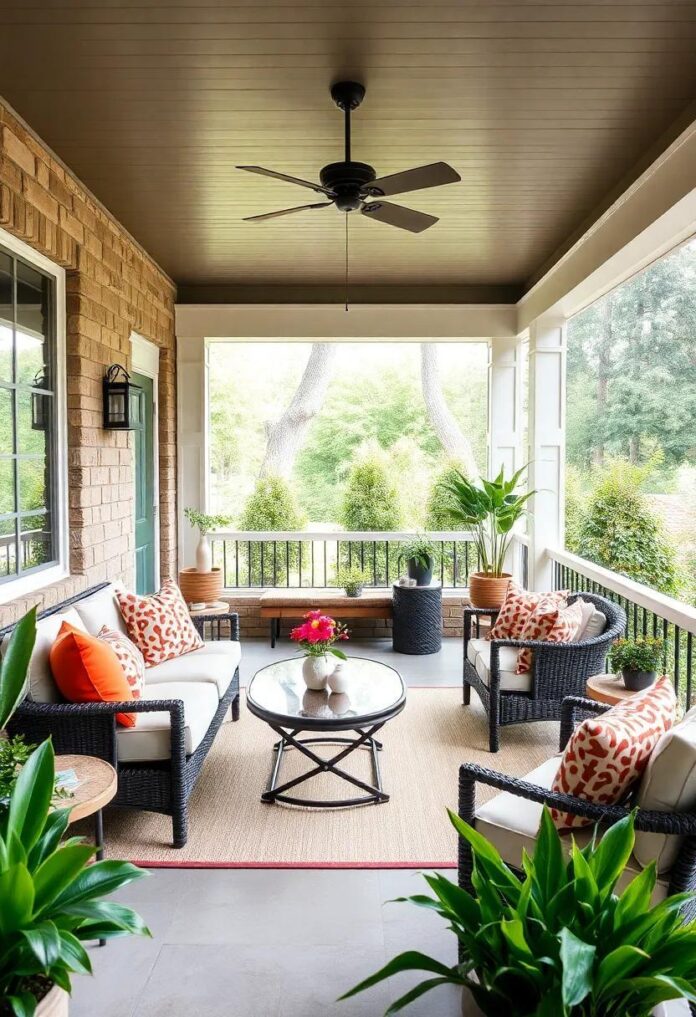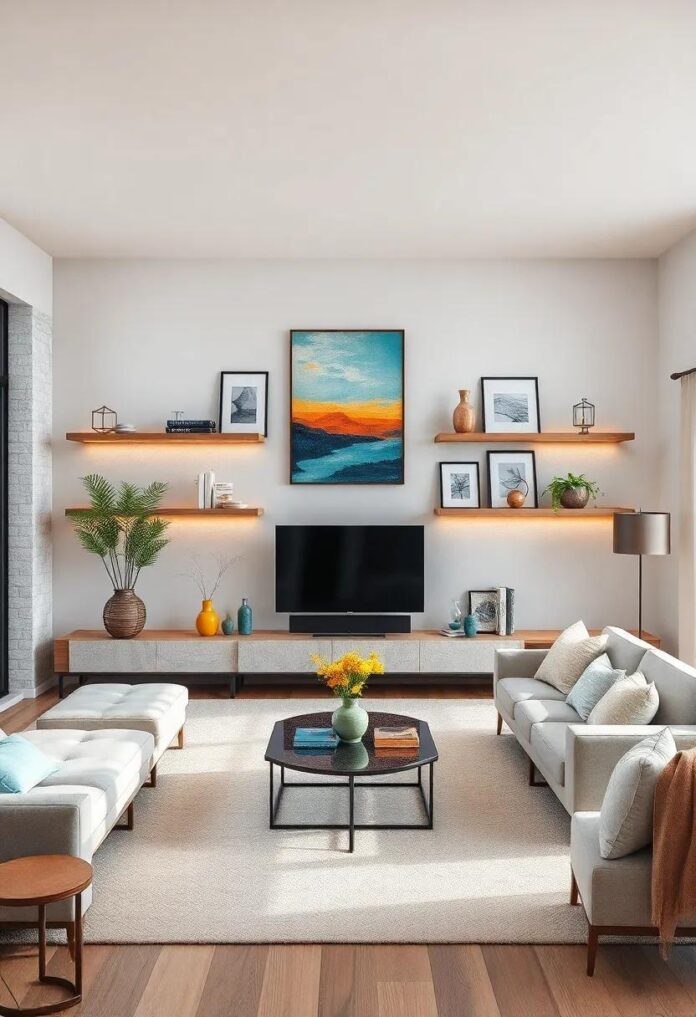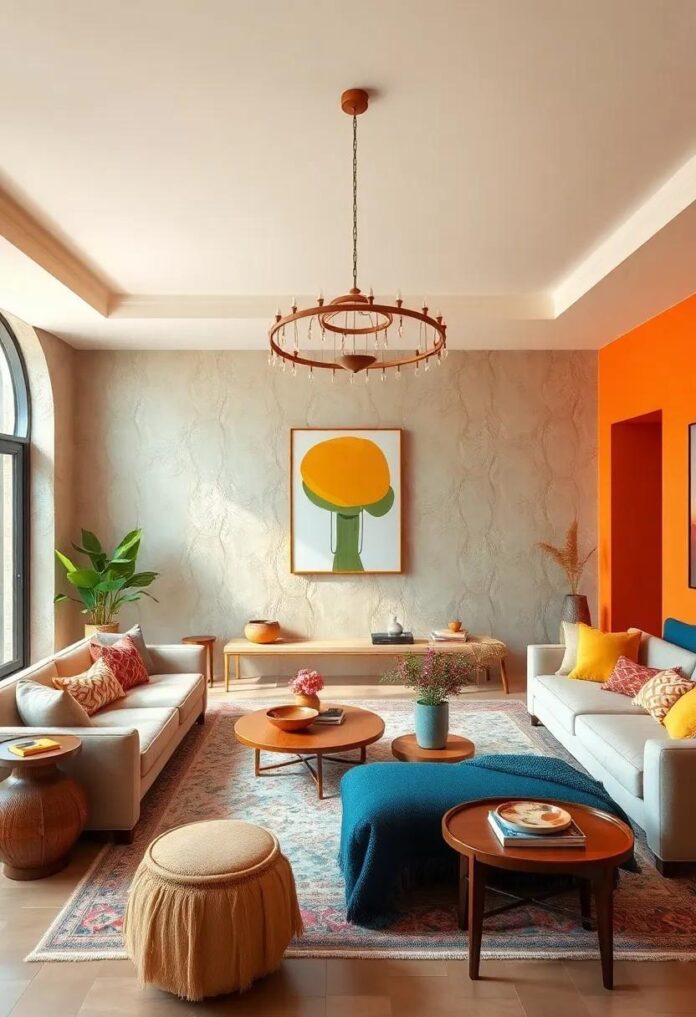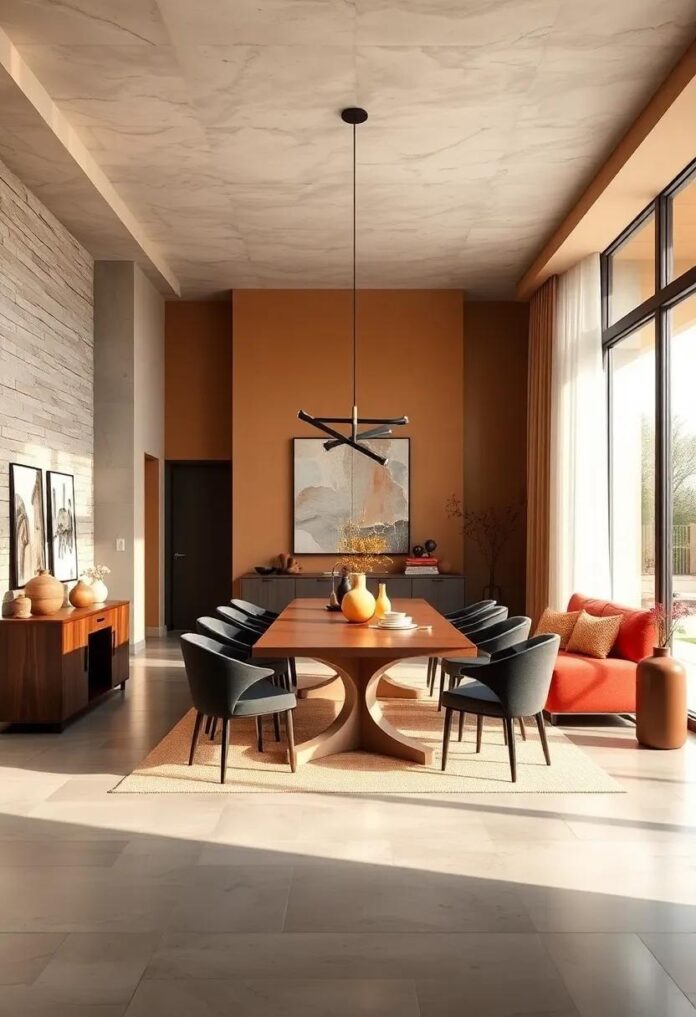In the heart of every home lies a space that transcends mere functionality—where families gather, friends reconnect, and memories are forged. The dining room is more then just a place to share meals; it is indeed a canvas for self-expression, a reflection of personal style, and a testament to the art of hospitality. As we journey through the ever-evolving landscape of contemporary dining room styles, we discover a harmonious blend of elegance and comfort that caters to the diverse tastes and lifestyles of today’s homeowners. From minimalist designs infused with modern flair to warm, inviting spaces that embrace rustic charm, this exploration invites you to reimagine your dining experience. Join us as we delve into the key elements that define contemporary dining rooms and uncover how the interplay of aesthetics and practicality can transform your dining area into a sanctuary of togetherness and joy.
Exploring Diverse Color Palettes That Define Contemporary Dining Room Styles
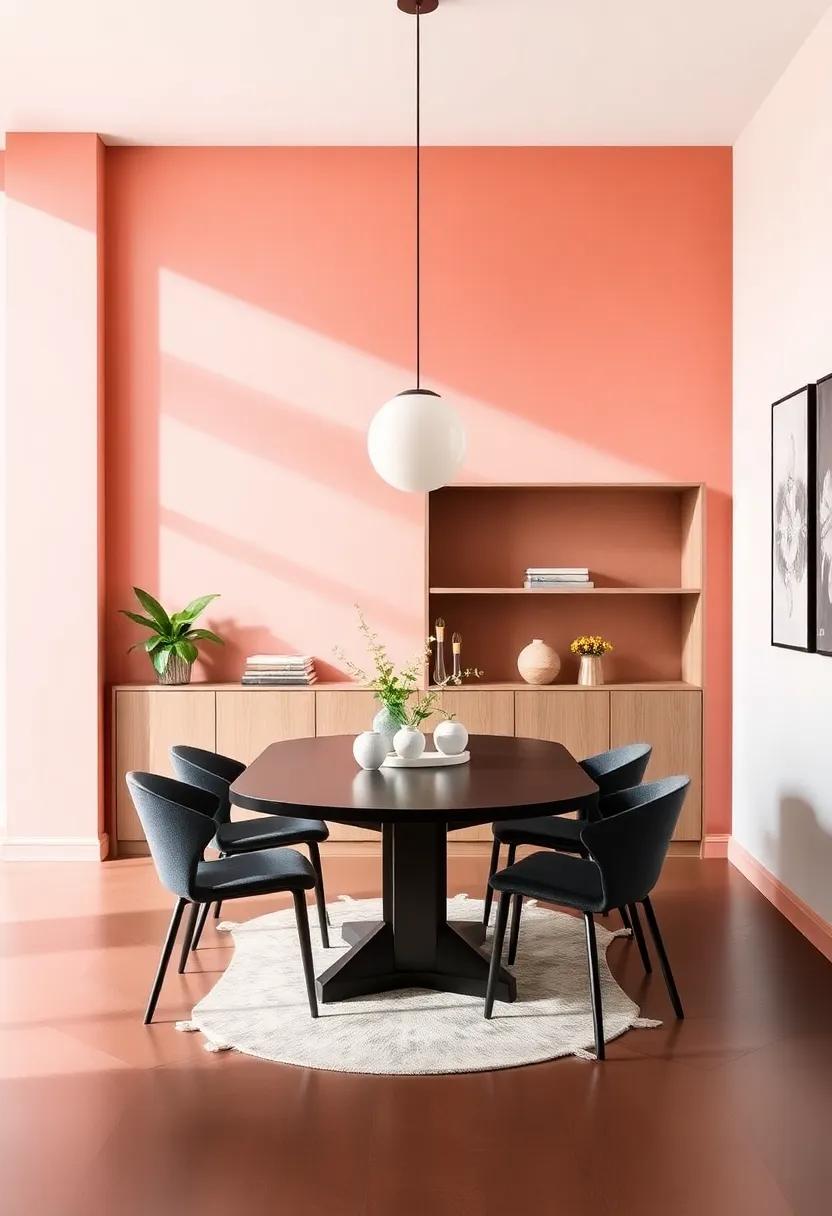
In contemporary dining spaces,the fusion of color palettes plays a critical role in establishing a refined yet inviting atmosphere. blending warm and cool tones can create a harmonious balance that encourages conversation and connection among diners. Rich hues like deep emerald green or navy blue can serve as elegant backdrops when paired with contrasting accents, such as crisp whites or soft pastels. Consider incorporating earthy tones, such as terracotta or muted yellows, which evoke a grounding feel, ideal for creating a cozy environment during intimate gatherings.
When curating your dining room colors, experimenting with accent walls or statement furniture pieces can transform the space into an artistic showcase. For instance, a bold burnt orange wall can be softened with a selection of minimalist, neutral-colored tableware and lighting fixtures. Textures also substantially impact the overall aesthetic. You can achieve sophistication through materials such as velvet or linen, enhancing the layered feel of the color scheme. Below is a simple table outlining effective color pairings that resonate well in modern dining environments:
| primary Color | Accent Color | Texture Suggestions |
|---|---|---|
| Emerald Green | Soft Beige | Velvet, Wood |
| Navy blue | Mustard Yellow | Linen, Metallics |
| Burnt Orange | Slate Gray | Concrete, Leather |
| Pastel Pink | Mint Green | Cotton, Glass |
The Art of Mixing Textures for a Cozy Yet Elegant Dining Experience
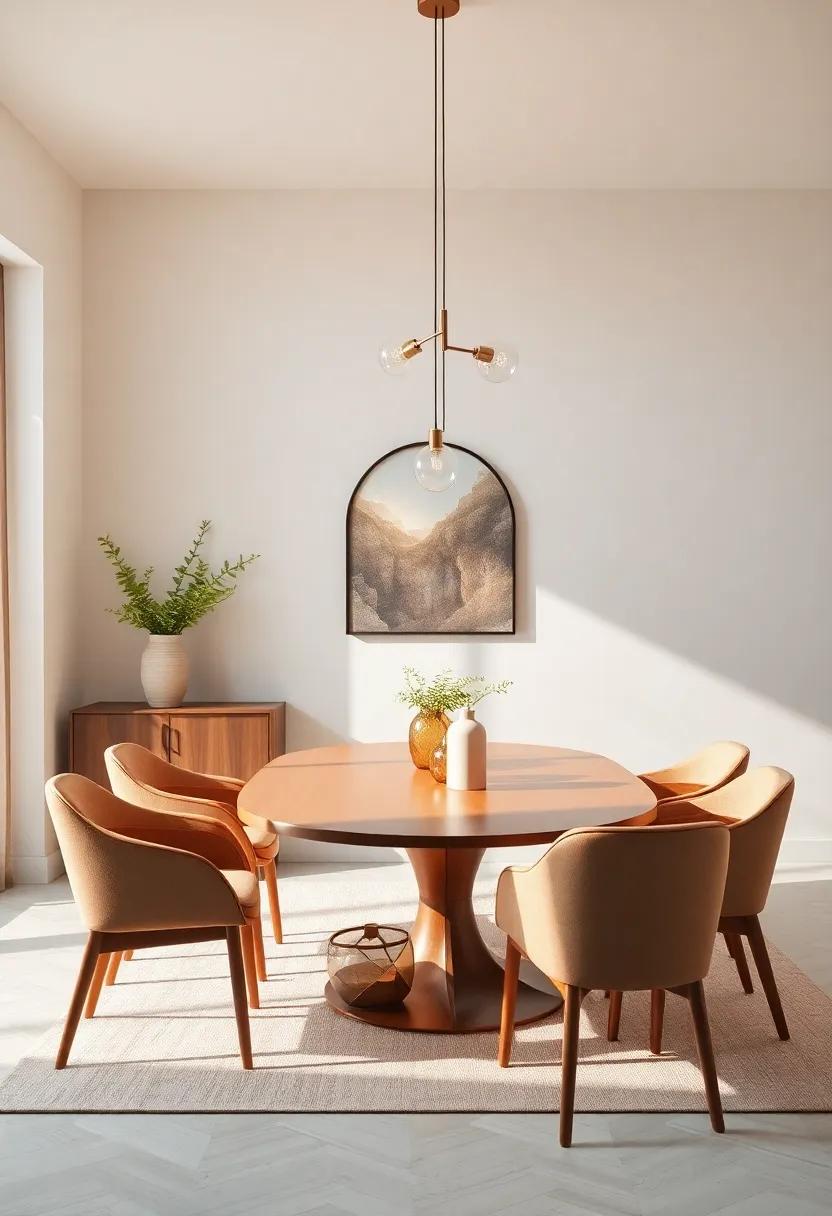
Creating a dining experience that exudes both warmth and sophistication hinges on the thoughtful combination of textures. Begin by layering soft fabrics like velvet or linen for table settings with harder materials, such as polished wood or metal accents. Incorporating a variety of textures not only adds depth but also draws the eye, enhancing the overall aesthetic of the space. Consider utilizing textured placemats, embroidered napkins, and ceramic dinnerware to strike a balance between casual charm and refined elegance. A mix of finishes can transform your table from ordinary to extraordinary,inviting your guests to indulge not only in the meal but in the atmosphere itself.
to further elevate your dining experience, focus on incorporating contrasting elements that harmonize with one another.Opt for matte and glossy surfaces, or combine rustic charm with sleek designs. For instance, alongside your polished glass centerpieces, add natural elements like a rough-hewn wooden serving board or a woven basket filled with seasonal fruits. These combinations create an inviting yet refined ambiance. Consider the following selections to inspire your texture mixing:
| Texture Type | Suggested Pairings |
|---|---|
| Velvet | Brushed Metal Cutlery |
| Wood Grain | glass Accents |
| Woven Fabrics | Sleek Porcelain Plates |
| Leather | Natural Fiber Runners |
By carefully selecting and blending distinct materials, you can craft a dining space that is both cozy and elegant, allowing every meal to feel special and inviting.
Incorporating Natural Elements for a Refreshing Dining Atmosphere
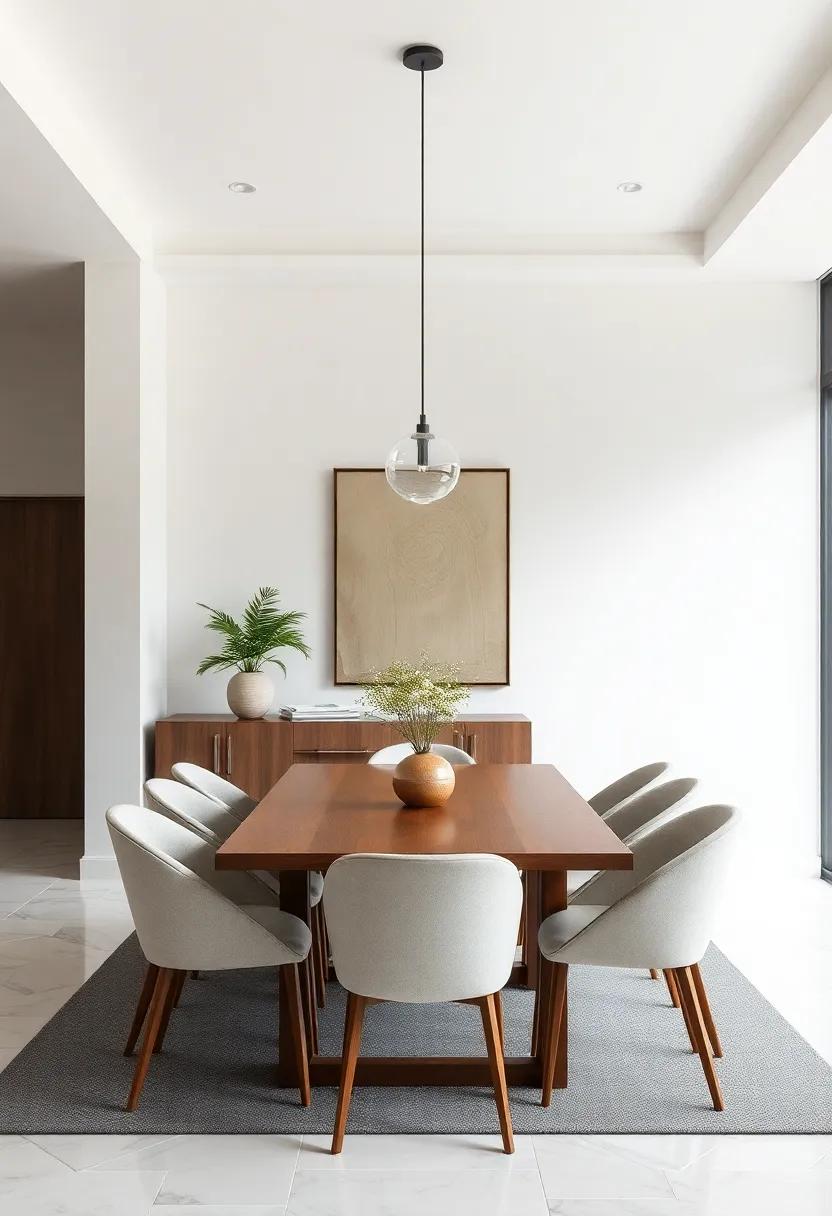
To invigorate your dining experience, integrating natural elements is essential. Consider the use of wood, stone, and plants to create a harmonious atmosphere that invites relaxation and conversation. Incorporating reclaimed wood dining tables not only adds warmth and character but also makes a sustainable choice that speaks to eco-conscious design. Pair these with textured linens and ceramic tableware, enhancing the organic feel while ensuring practicality. The use of large stones as centerpieces or accent pieces can further elevate the aesthetic, blending the comfort of nature with contemporary dining design.
In addition to the tactile elements, lighting plays a crucial role when incorporating nature into your dining space. Opt for soft, ambient lighting that mimics the golden hues of sunset; hanging pendant lights resembling natural forms, such as leaves or branches, can be striking focal points.A well-placed vertical garden or oversized potted plants can infuse vitality into the room, improving air quality and creating a serene backdrop. Utilizing a combination of these elements, you can transform your dining area into a peaceful retreat where friends and family gather to enjoy not only meals but also the beauty of nature.
Stylish Lighting Fixtures That Elevate modern Dining Spaces
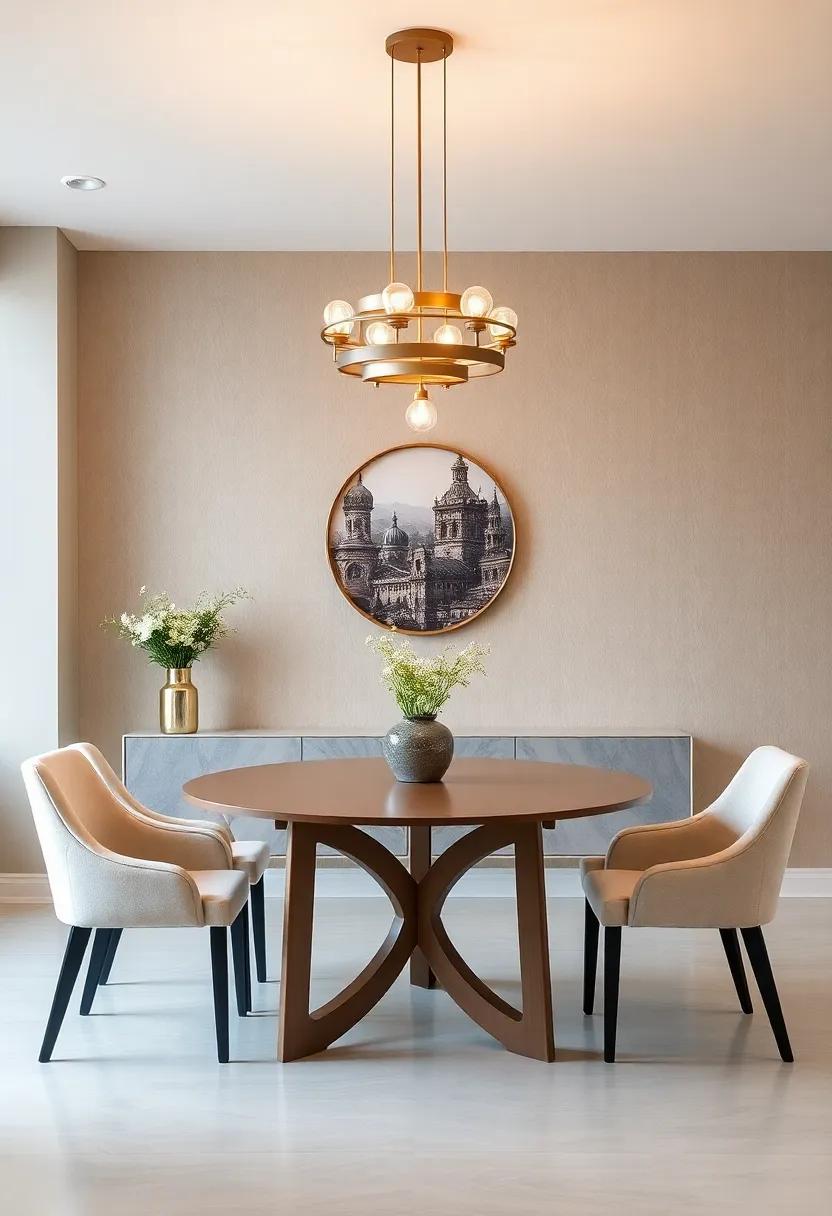
Lighting plays a pivotal role in defining the mood and aesthetic of any dining space. For those looking to create an atmosphere that perfectly marries modernity with elegance,selecting the right fixtures is essential. Consider fixtures like geometric chandeliers that serve as statement pieces, seamlessly pulling together the elements of your dining room. Opt for materials such as brushed brass or matte black metal to imbue a sense of contemporary sophistication. additionally,wall sconces can be used to create a warm,inviting glow,enhancing the intimate ambiance of dinner parties or family gatherings.
To ensure that your lighting complements your décor, explore a range of styles and designs which include:
- Pendant lights for a focal point above the dining table
- Track lighting to highlight artwork or architectural features
- LED strips for functional illumination along shelves or cabinetry
- smart lighting options for customizable brightness and ambiance control
Here’s a simple comparison of popular styles to consider:
| Lighting Style | Best For | aesthetic Appeal |
|---|---|---|
| Pendant Lights | Focal points | Chic & Striking |
| Chandeliers | Formal Settings | Luxurious & Grand |
| Wall Sconces | Cohesive Lighting | Elegant & Soft |
Furniture Choices That Marry Functionality with Design Aesthetics
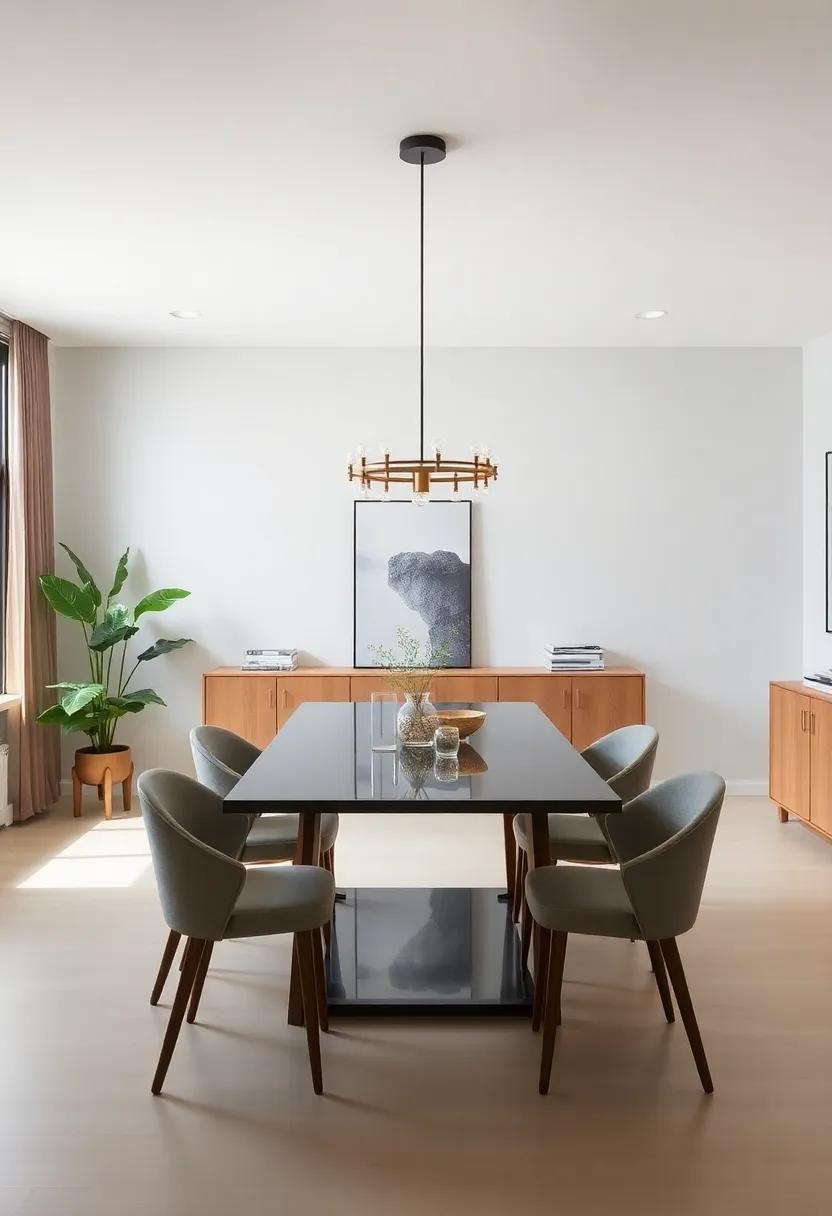
When curating the perfect contemporary dining room, the selection of furniture plays a pivotal role in achieving both style and practicality. The right pieces can not only enhance the visual appeal of the space but also contribute to a comfortable dining experience. Consider incorporating elements such as:
- multi-functional tables: Expandable dining tables can accommodate various gatherings, transforming seamlessly from an intimate dinner for two to a lively family feast.
- Ergonomic chairs: Look for designs that offer both comfort and aesthetic appeal, with supportive structures that invite prolonged seating while complementing the table’s style.
- Storage solutions: Buffets and sideboards that blend seamlessly into the decor provide practical storage for dinnerware while acting as a focal point in the room.
To harmonize with the overall design,choose finishes and colors that resonate with your desired theme,whether it’s modern minimalist or rustic chic. Natural materials such as wood, metal, and glass can lend a touch of warmth and elegance. Here’s a simple guide to selecting materials that enhance both beauty and durability:
| Material | Attributes |
|---|---|
| Wood | Durable, classic, and warm |
| Metal | sturdy, modern, and easy to clean |
| Glass | Airy, elegant, and visually expanding |
| Fabric | Soft, cozy, and customizable |
Creating a Seamless Flow Between Dining and Living Areas
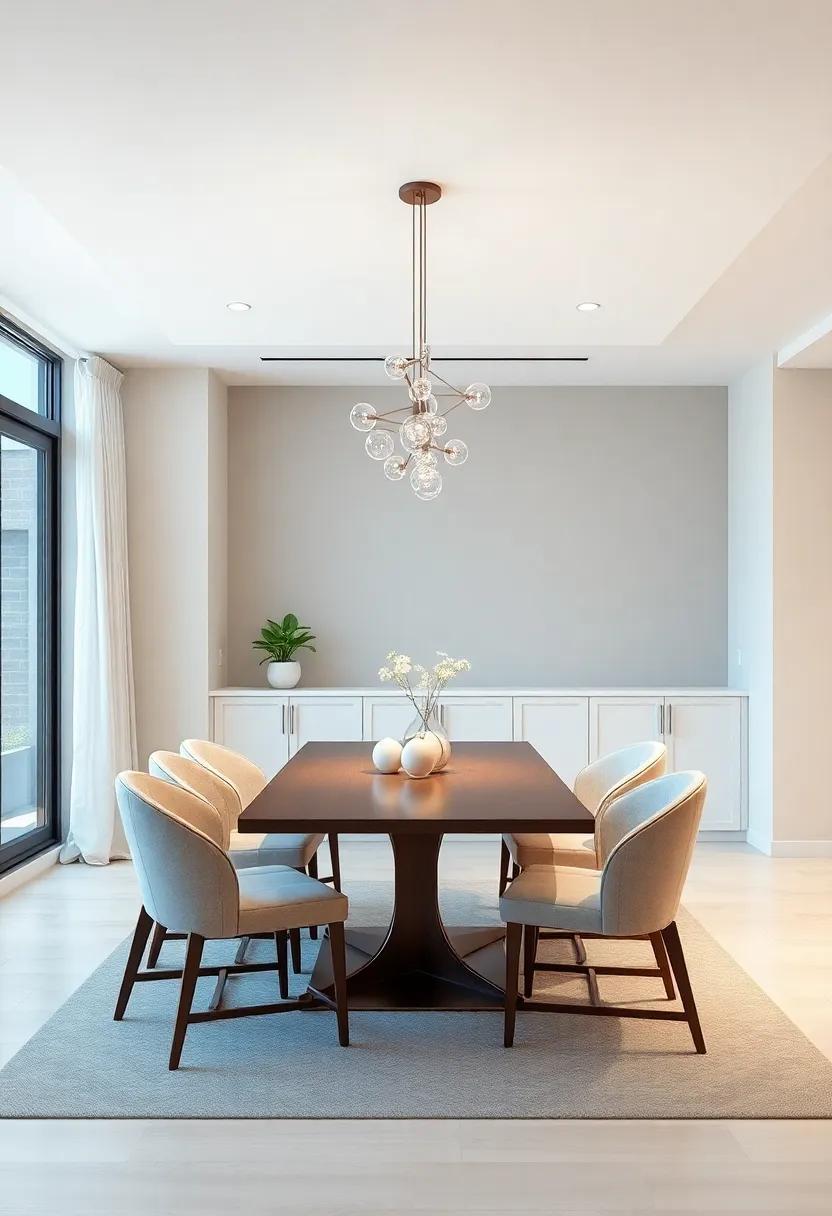
Achieving a harmonious interplay between your dining and living spaces involves thoughtful design choices that foster connection. Consider selecting a color palette that bridges both areas, creating visual continuity.Opt for open layouts where possible, allowing natural light to flow freely, enhancing the overall ambiance. Incorporate materials like wood or metal that mirror elements in both spaces, such as light fixtures or furniture finishes. Additionally, a well-placed area rug can act as a subtle boundary while still inviting movement between the two areas.
The choice of furniture also plays a crucial role in promoting a cohesive atmosphere. Aim for pieces that reflect a consistent style—whether it’s modern minimalism, rustic charm, or industrial vibes. When selecting dining tables and chairs,consider their alignment with living room furnishings to create a unified look. For instance, pairing a sleek dining table with upholstered chairs can echo the comfort found in your living area’s seating. To further solidify the connection, decorative accents such as plants, artwork, or statement lighting can draw the eyes seamlessly from one space to the other, enhancing both functionality and aesthetic appeal.
The Role of Statement Centerpieces in Contemporary Dining Rooms
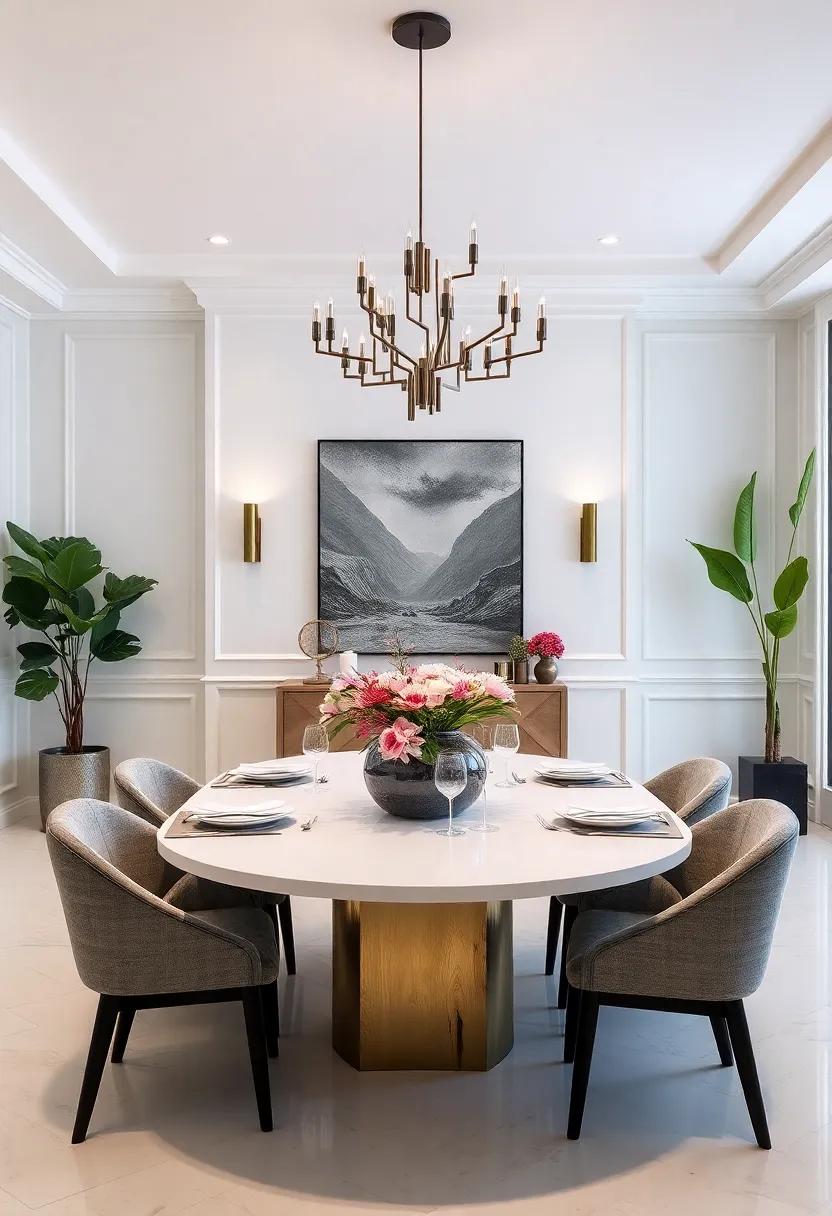
in contemporary dining rooms, statement centerpieces play a pivotal role in shaping the overall aesthetic and ambiance. Whether it’s an extravagant floral arrangement, a striking sculpture, or a unique piece of art, these elements serve as focal points that draw the eye and invite conversation. A well-chosen centerpiece not only enhances the beauty of the table but also reflects the personal style of the homeowners, making the dining space more inviting and engaging. Color, texture, and design become crucial in selecting the right centerpiece, harmonizing with the overall theme of the room while standing out as a statement piece.
Moreover, statement centerpieces can also fulfill functional roles in a dining room, contributing to both comfort and utility. Consider incorporating elements that serve a double purpose, such as:
- Artistic fruit bowls that provide a pop of color and a healthy snack option.
- Stylish serving trays that act as a decorative element while being practical for serving guests.
- Illuminated centerpieces, such as elegant candle arrangements, which create a warm and inviting atmosphere during dinner parties.
Each of these options resonates with modern sensibilities, marrying aesthetics with practicality. This synergy fosters a dining environment that feels both refined and lived-in,encapsulating the essence of contemporary design.
Exploring Minimalistic Approaches to Dining Room Designs
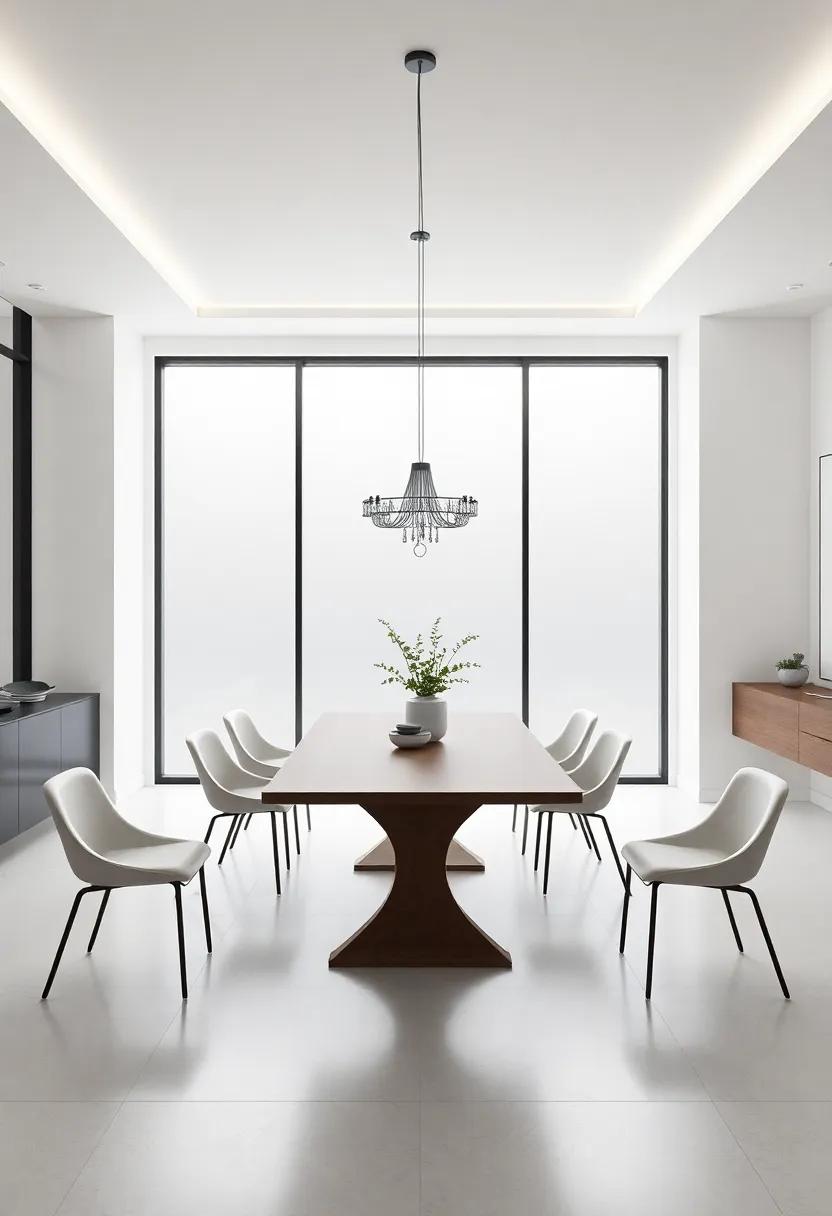
In the pursuit of a serene and uncluttered dining environment, minimalistic designs prioritize space and light. whether through sleek lines or neutral color palettes, these elements foster tranquility and elevate the dining experience.Key characteristics of minimalistic dining room designs include:
- Simplicity: Focus on essential furniture pieces, avoiding unneeded decorations to create an airy atmosphere.
- Functional Furniture: Choose tables and chairs that are not only stylish but also serve multiple purposes, enhancing practicality.
- Natural Materials: Incorporate elements like wood and stone to add warmth while maintaining a clean aesthetic.
- Open Space: Optimize natural light and avoid overcrowding, allowing each piece to breathe within the space.
Balancing form and function, these designs can accommodate a variety of lifestyles without compromising on style.For those looking to enhance their minimalistic dining room, consider the following:
| Element | Description |
|---|---|
| Color Scheme | Neutrals with the occasional pop of color for a focal point. |
| Lighting | Simple pendant lights or recessed fixtures to maintain a clean look. |
| Artwork | A single statement piece adds character without cluttering the walls. |
| Table Setting | Limit decorations to essential tableware, emphasizing design over quantity. |
Combining Vintage Elements with Modern flair in Dining Spaces
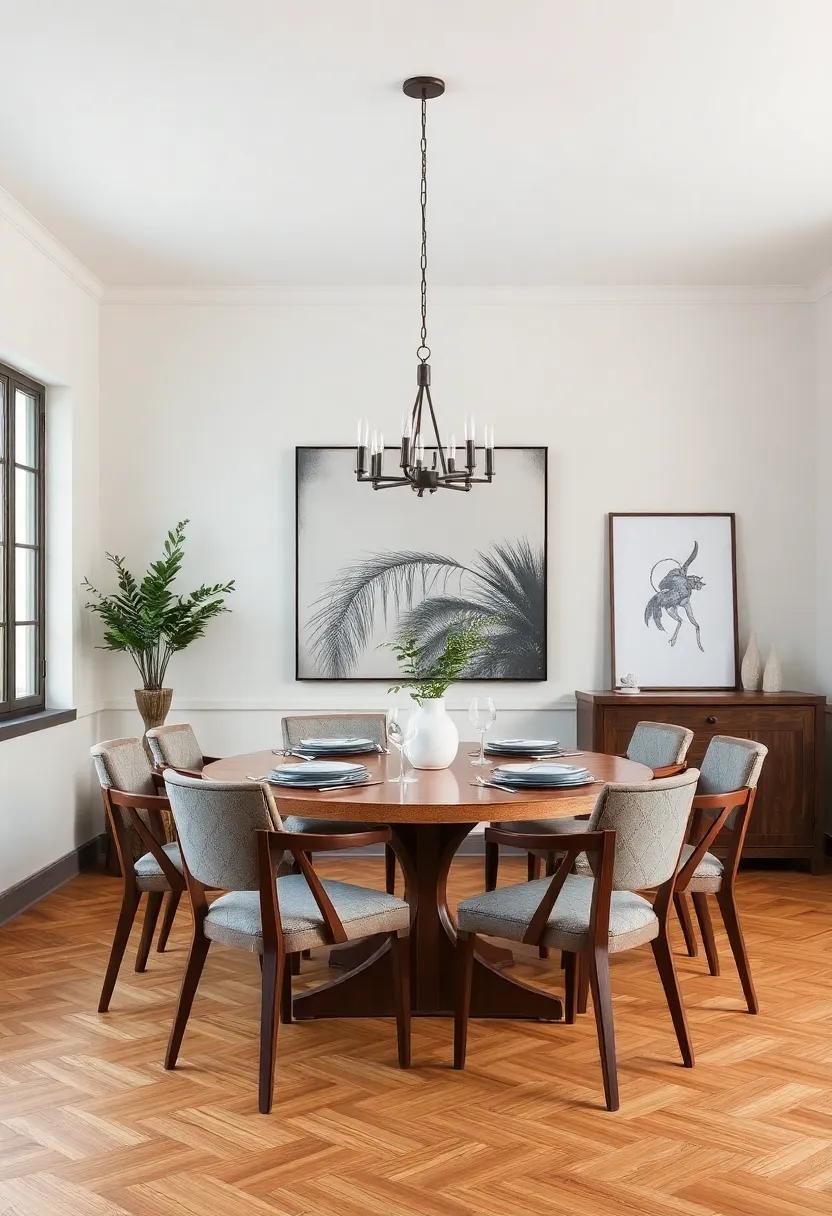
In the realm of dining spaces, merging vintage elements with modern flair offers a unique canvas for creativity and expression. Imagine a room where mid-century modern chairs provide comfortable seating around a rustic wooden table, each piece telling its own story. This eclectic mix can be further enhanced by choosing a bold color palette that evokes nostalgia while still embodying contemporary style. Accessories play a crucial role; think vintage tableware paired with minimalist centerpieces or retro lighting fixtures juxtaposed against sleek design. The key is to strike a balance,ensuring that vintage and modern elements complement rather than compete with each other.
to achieve a harmonious look, consider the following elements:
- Textures: Combine soft velvet cushions with a weathered wood table.
- Patterns: use geometric modern prints on curtains with floral vintage motifs for table linens.
- lighting: Pair an antique chandelier with modern pendant lights.
Incorporating decorative items, such as a vintage bar cart displaying modern glassware, can serve as a functional focal point. These thoughtful details create an inviting atmosphere, encouraging lively gatherings while showcasing your unique aesthetic. Feel free to experiment with pieces from different eras; after all, the heart of a dining space is a party of both the past and the present.
Innovative Table Settings That Enhance the Dining Experience
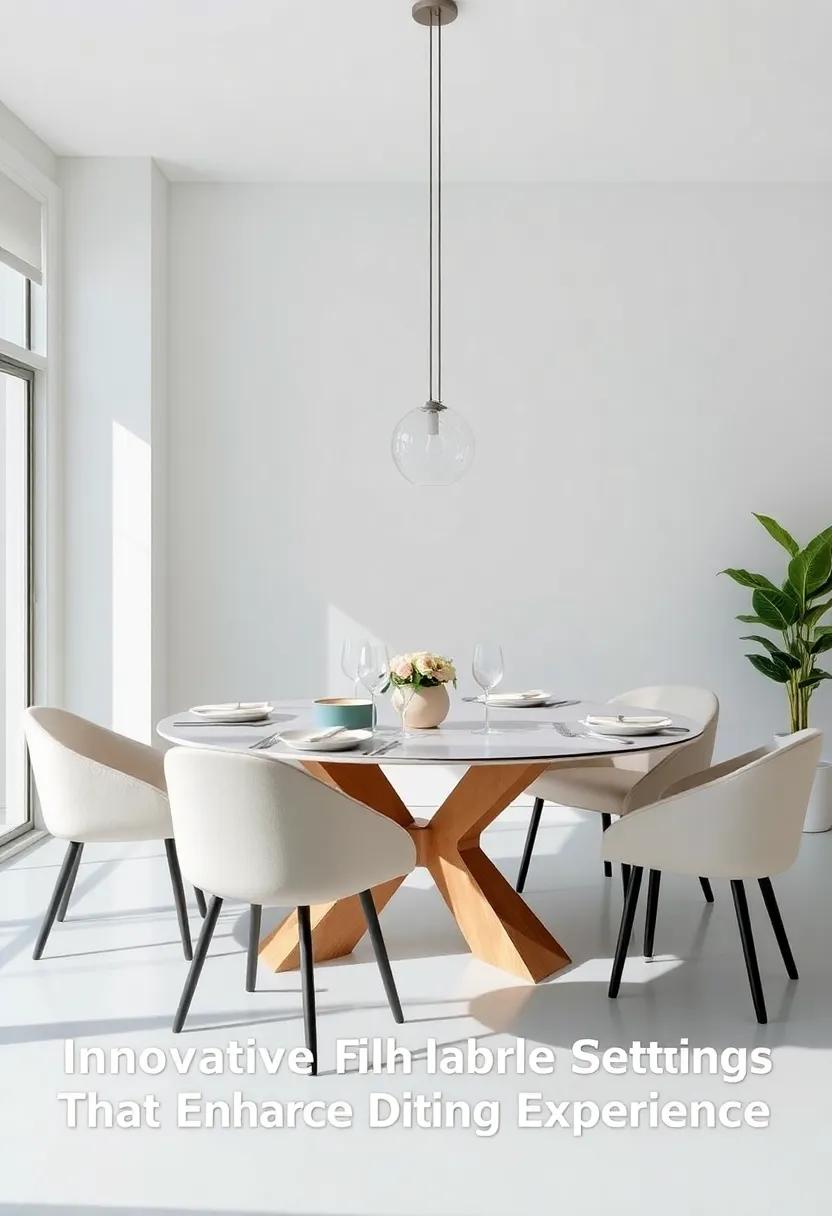
Transforming your dining experience starts with the table setting, where creativity meets functionality. Here are some innovative ideas to elevate your dining ambiance:
- Layered Textures: Combine different materials such as linen tablecloths, woven placemats, and unique napkins to create depth.
- Unexpected Centerpieces: Instead of traditional flowers, opt for edible arrangements, seasonal fruits, or artisanal candle displays.
- Modern Dishware: Utilize mismatched vintage ceramics alongside contemporary glassware to add a personal touch.
Lighting plays a crucial role in setting the mood. Consider these enhancements for a cozy,inviting space:
- Multi-Level Lighting: use dimmers and layered lighting sources,like pendant fixtures and candles,to create a warm glow.
- Ambient Elements: Incorporate soft music and subtle aromatherapy with scented candles or essential oil diffusers to engage all senses.
- Interactive Decor: Choose pieces that encourage conversation, such as a large communal dish or trivia cards nestled within the decor.
The Influence of Spatial Layout on Comfort and Style in Dining Rooms
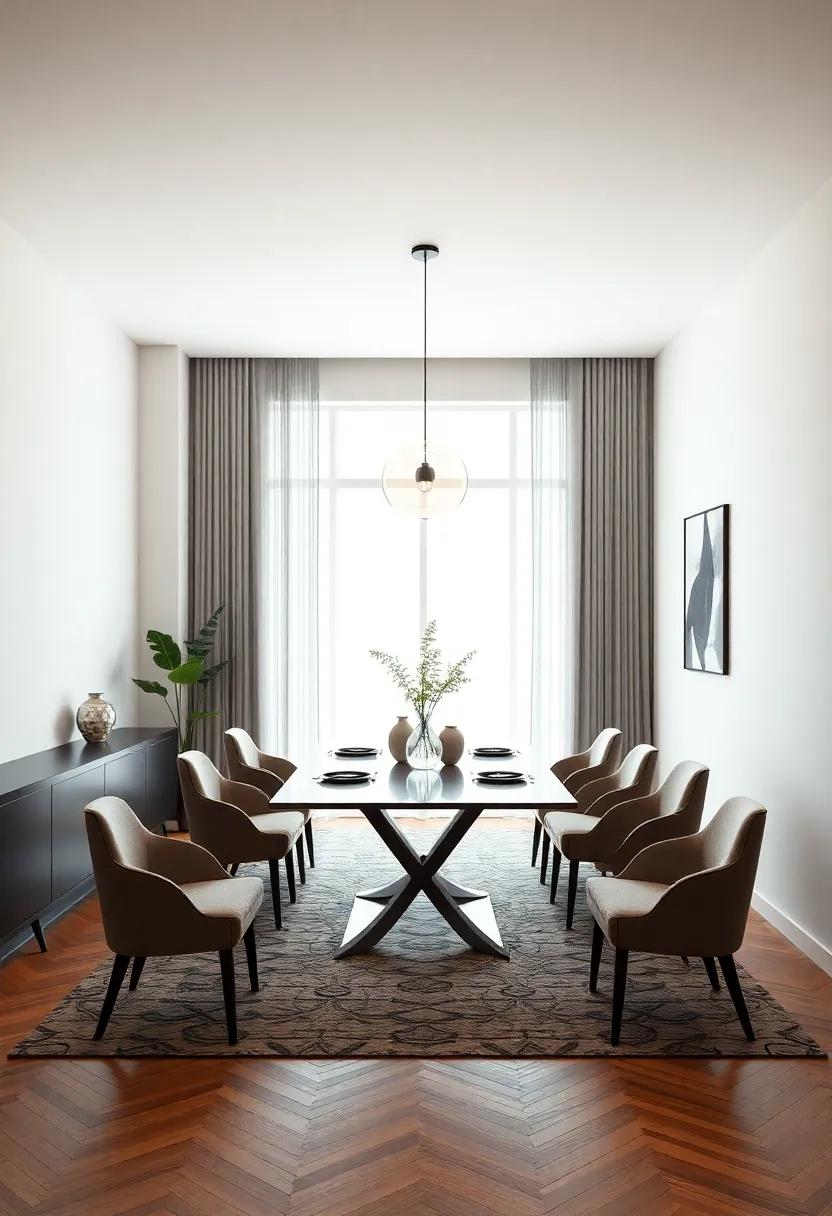
The spatial layout of a dining room is crucial in determining both comfort and style, influencing how individuals interact and experience the space. A well-considered arrangement can create a harmonious flow that encourages conversation and a sense of togetherness. Opting for round tables can enhance intimacy, while long rectangular tables can serve larger gatherings. Additionally, the distance between furniture pieces should be thoughtfully measured to ensure that guests can move freely without feeling cramped. A few key elements to consider include:
- Table Size: Choose a table size that allows for comfortable seating while maximizing space.
- Seating Arrangement: Varying chair styles or adding benches can introduce playfulness while providing flexibility.
- Traffic Flow: Ensure clear pathways for movement, avoiding clutter that can disrupt the dining experience.
Furthermore, integrating multi-functional furniture can enhance both comfort and style. Consider using extendable tables or storage benches that accommodate different dining scenarios, from casual weeknight dinners to elegant gatherings. Lighting also plays a important role—hanging pendant lights or a chandelier at the appropriate height can create a focal point while making the room feel inviting.The right balance of colors, textures, and materials can elevate aesthetic appeal while maintaining cozy vibes. Here’s a simple guide to effective lighting choices:
| lighting Type | Effect |
|---|---|
| Chandelier | Creates a dramatic focal point |
| Pendant Lights | Adds warmth and intimacy |
| Wall Sconces | Enhances ambiance and style |
Emphasizing Personal style Through Custom Dining Room Decor
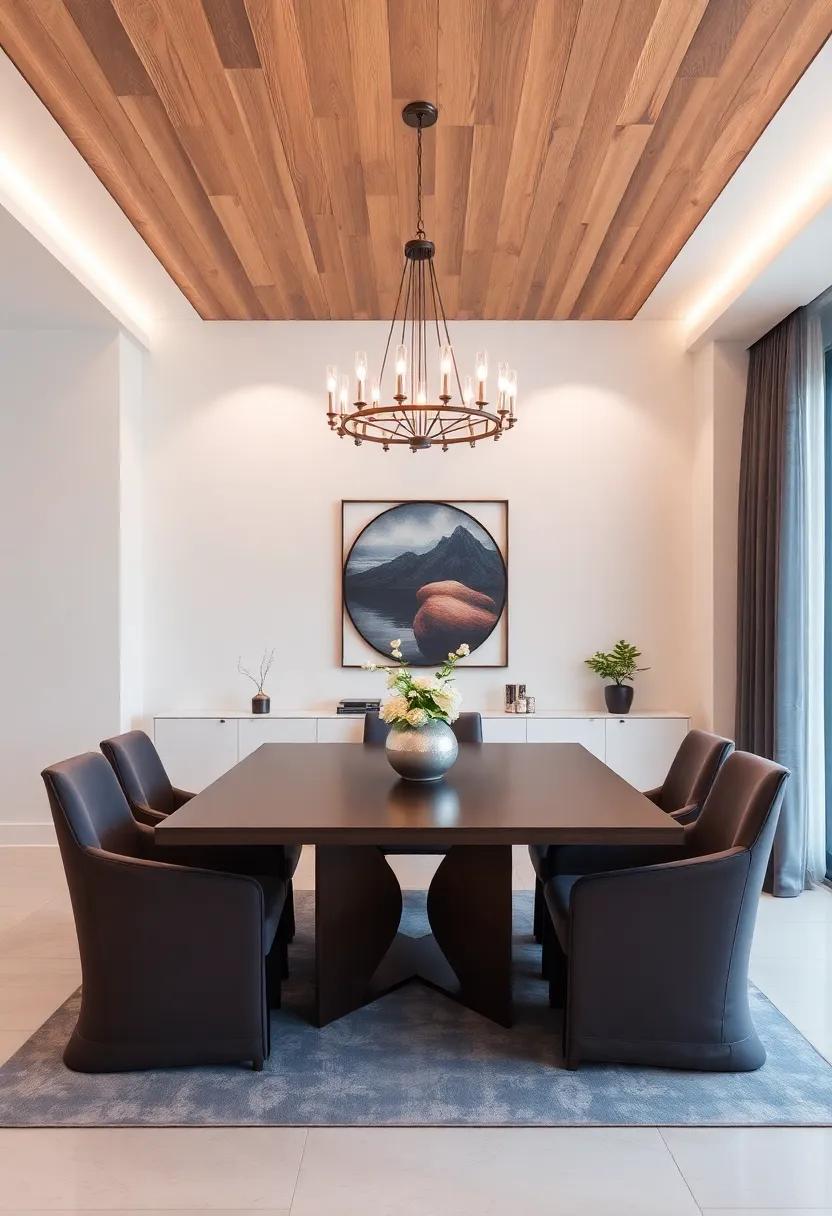
Custom dining room decor allows you to express your individual style while creating a space that is both inviting and functional. By selecting unique elements, you can transform your dining area into a personal sanctuary that reflects your taste. Consider incorporating custom pieces such as:
- Artisan-made tableware – Handcrafted plates and glassware that add a local touch.
- Statement lighting – Unique chandeliers or pendant lights that serve as focal points.
- Textiles – Personalized table runners,placemats,or cushions to enhance comfort.
- Wall art – Customized artwork or family photos that tell a story.
By blending personal touches with contemporary elements, you can create a harmonious environment that caters to both aesthetics and practicality. Different materials and textures can play a significant role in enhancing your dining experience. A comparison of various decor components might be helpful:
| Element | Material | Style Impact |
|---|---|---|
| Dining Table | Wood | Warm and inviting |
| Chairs | Metal | sleek and modern |
| Lighting | Glass | Elegant and airy |
| Textiles | Cotton | Comfortable and casual |
Dining Room Accessories That Add Character and Warmth
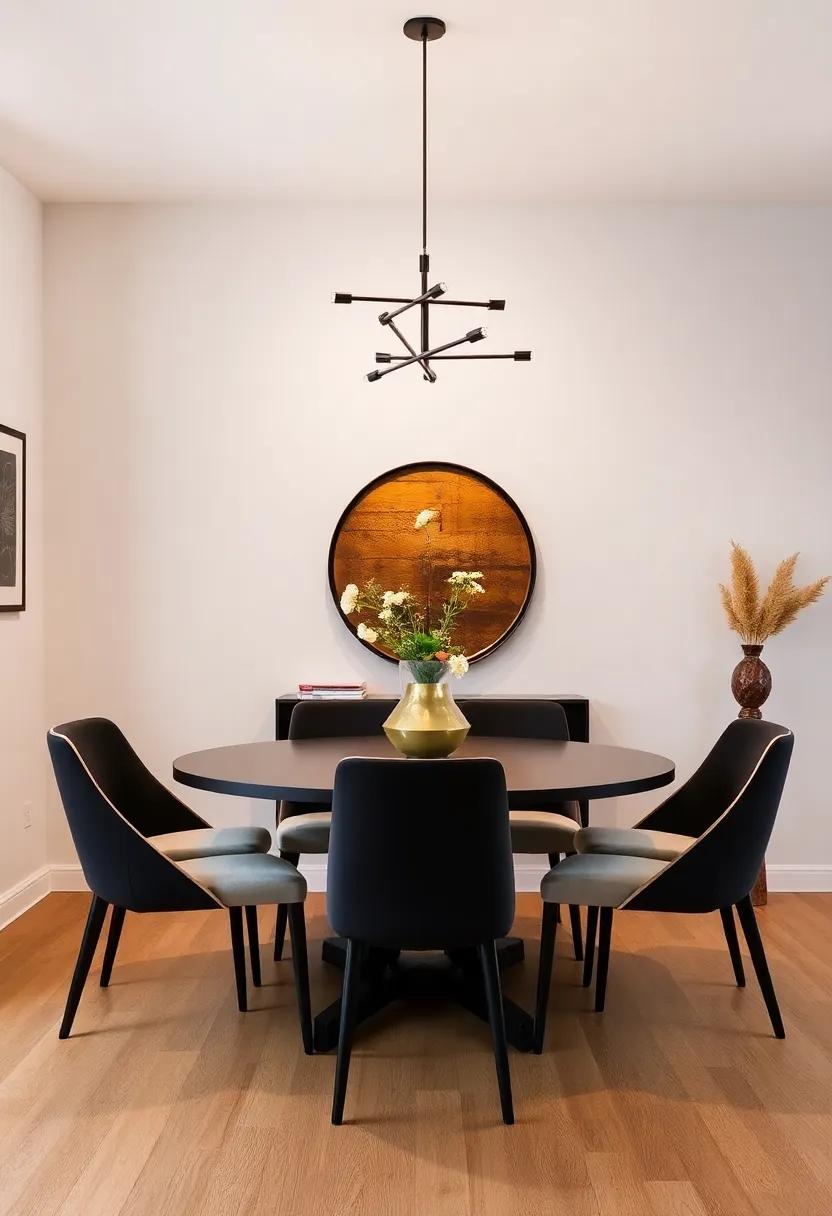
Infuse your dining space with personality through carefully selected accessories that not only align with modern aesthetics but also exude warmth and character. Consider incorporating textured table runners and artful centerpieces that reflect your style. Items like vintage candlesticks or handcrafted pottery can serve as focal points while inviting intimate gatherings. Layering various materials—such as wood, metal, and fabric—creates visual interest. For a pop of color, add vibrant placemats or individually styled napkins, inviting guests to engage more with the dining experience.
Lighting plays a pivotal role in setting the ambiance; a statement chandelier or softly glowing pendant lights can dramatically transform the room’s atmosphere. Wall art and decorative mirrors not only enhance the aesthetic but also play tricks with light, making the space feel larger and more inviting. To soften the look, add a few green plants or fresh flowers on the sideboard or windowsill, bringing a touch of nature indoors. These elements, when harmonized, create a dining room that feels cohesive and welcoming, making every meal a memorable occasion.
Integrating Technology for a Modern Dining Experience
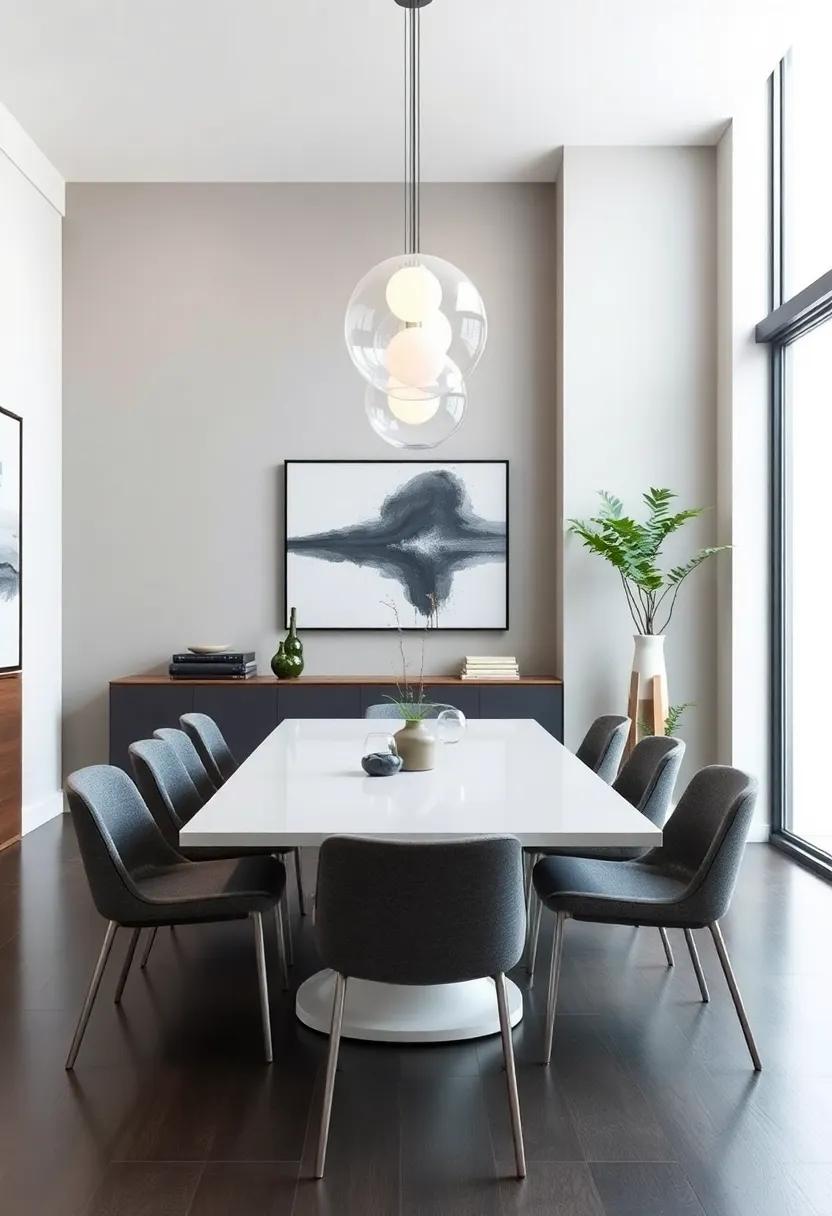
In today’s fast-paced world, technology has become an integral part of our daily lives, transforming even the most traditional spaces like the dining room into innovative environments. Smart home systems allow homeowners to control lighting, temperature, and sound through mobile devices or voice commands, enhancing the dining experience. Features such as:
- Smart Lighting: Adjustable brightness that sets the perfect mood for any occasion.
- Multi-Functional Tables: Tables that can expand or change shape with the push of a button.
- Integrated Screens: Displays for menus, recipes, or even digital art that add a modern flair.
This blend of style and functionality not only attracts the eye but also offers unparalleled convenience. Additionally, innovative appliances like smart ovens and refrigerators can sync with your device to recommend recipes or alert you when ingredients are running low. Consider incorporating:
| Appliance | Feature |
|---|---|
| smart Oven | Preheat remotely and receive cooking alerts |
| Smart Refrigerator | Inventory tracking and recipe suggestions |
| Automated Coffee Maker | Custom brew settings from your smartphone |
Exploring Cultural Inspirations in Contemporary Dining Room Designs
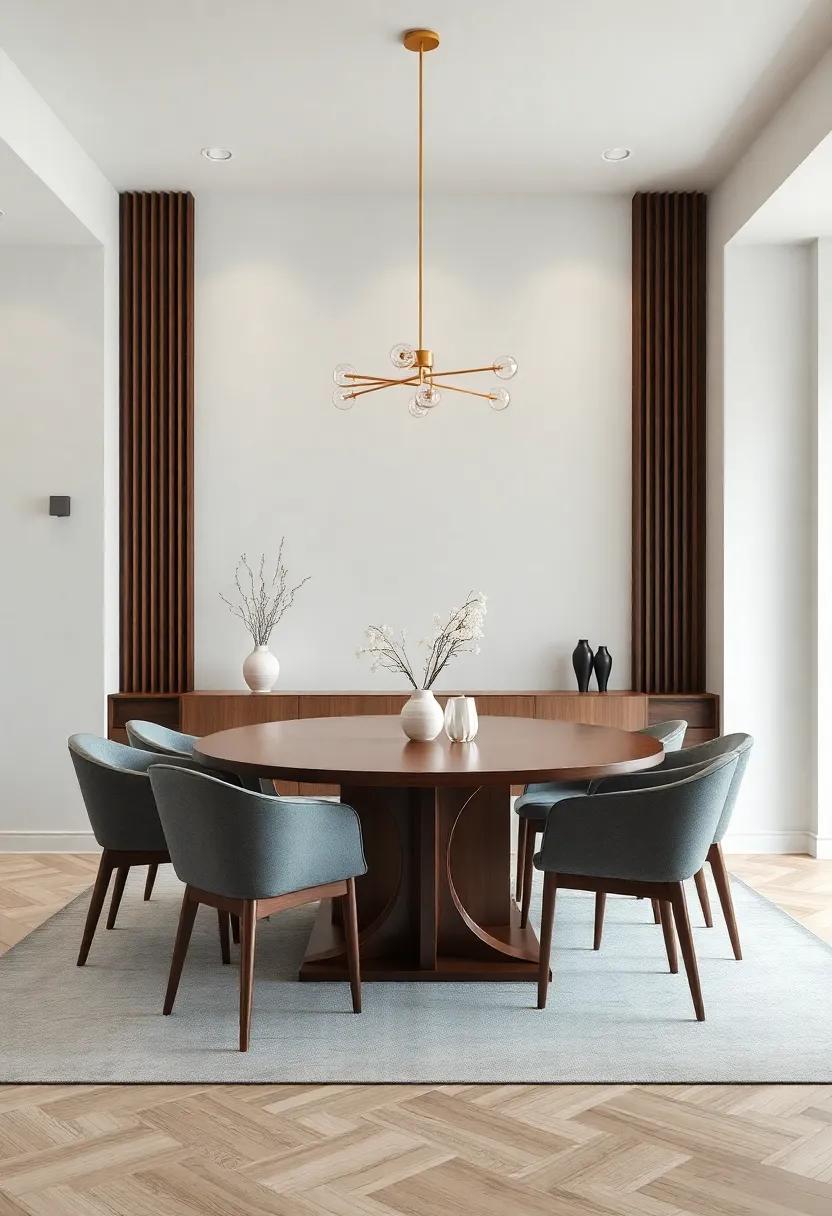
Contemporary dining room designs frequently draw from a rich tapestry of global influences, creating spaces that are as eclectic as they are elegant.This melding of styles allows homeowners to express their cultural identity and personal tastes through decor elements that reflect both tradition and innovation. For instance, the incorporation of Scandinavian minimalism brings a sense of clean lines and functionality, while mediterranean accents introduce warmth and a casual, inviting atmosphere. Different textures and materials play a significant role,as seen in the use of natural wood,ceramic tiles,and woven fabrics,which together create a harmonious balance of comfort and sophistication.
As culinary experiences have become intertwined with cultural thankfulness, dining room designs have similarly evolved. Key elements that reflect this integration include:
- Artisan dinnerware that showcases local craftsmanship.
- Textiles featuring traditional patterns that tell a story.
- Lighting fixtures inspired by various cultural motifs, adding character and depth.
By thoughtfully curating these elements,individuals can transform their dining areas into vibrant settings that honor both heritage and modern design. A well-designed dining room not only invites gatherings but also celebrates the diversity of cultural stories, fostering an environment of connection and appreciation.
Transformative Color Schemes for Versatile Dining Ambiances
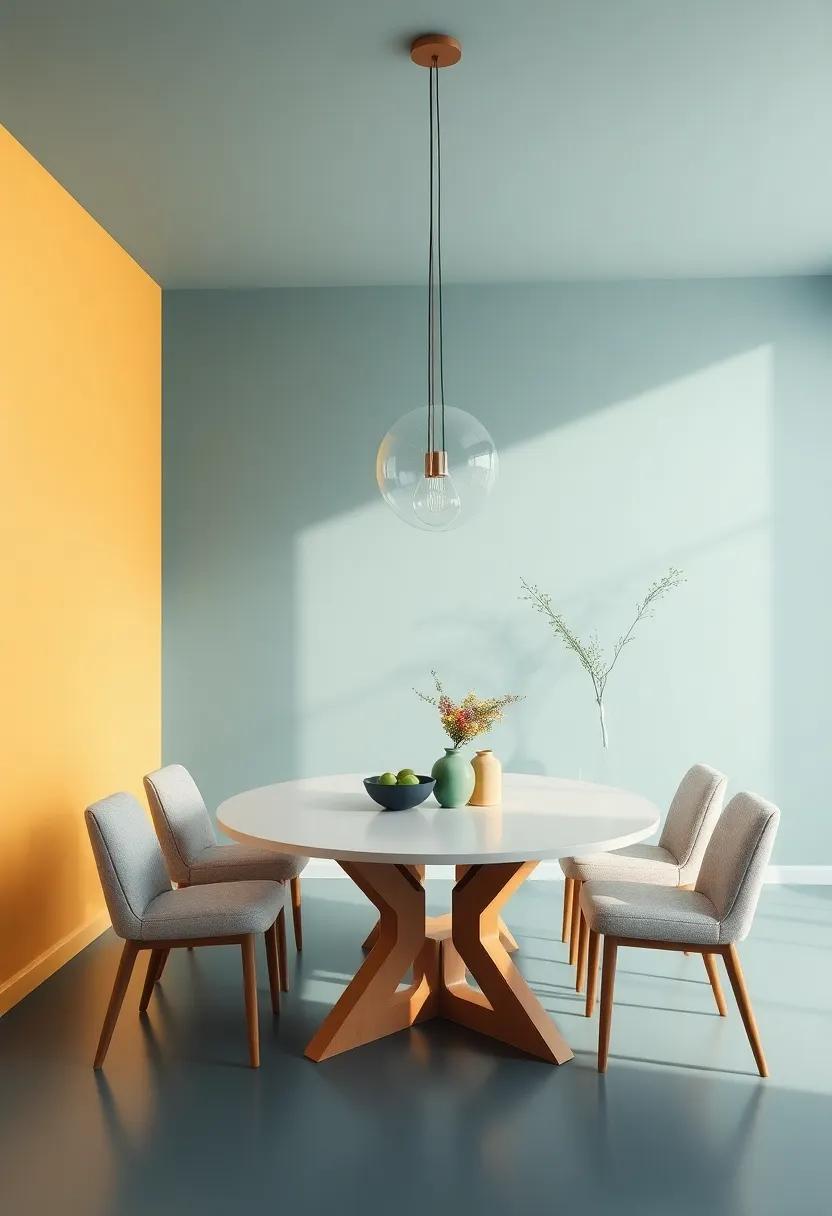
When crafting the perfect dining atmosphere, the choice of color schemes plays a crucial role in setting the mood. Soft pastels, such as powder blue and gentle peach, evoke a sense of tranquility, making them ideal for casual family meals, while deeper shades like forest green or navy blue embody sophistication, perfect for formal dinner parties. To create a dynamic yet cohesive look, consider incorporating accent colors such as mustard yellow or burnt orange for a pop of vibrancy. By layering these hues through wall paint, furniture, and decor elements, you can transform an ordinary dining space into an extraordinary communion hub.
To illustrate how different color schemes can reflect various dining purposes, here’s a speedy overview:
| Color Scheme | Mood | Suggested use |
|---|---|---|
| Soft pastels | Relaxed | Casual Family Dinners |
| Deep Jewel Tones | Elegant | Formal Gatherings |
| Neutral Tones | Versatile | Everyday Meals |
| Bright Accents | Inviting | Brunches or Celebrations |
Combining textures and materials along with your chosen color palette enhances the overall design and atmosphere. Think about rich wood finishes paired with matte surfaces, or velvet upholstery contrasting against sleek metal elements. This blend captures both comfort and elegance, allowing the dining room to transition seamlessly from a cozy family space to a stylish venue for entertaining guests. As you experiment with these transformative color schemes,remember that a welldesigned dining area should reflect personal style while fostering connection and conversation.
Sustainable Materials and eco-Friendly Choices in Dining Room Styles
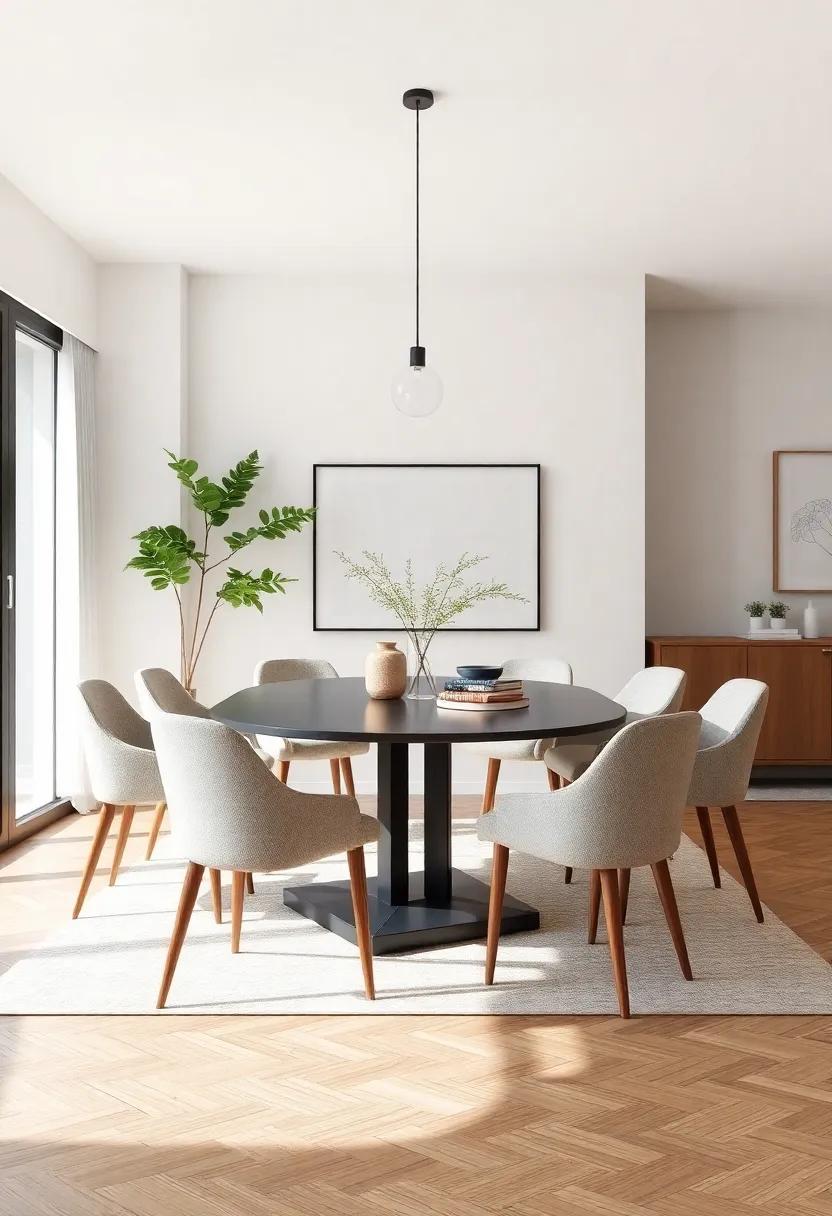
When designing a contemporary dining room, opting for sustainable materials is not just a trend; it’s a commitment to a healthier planet. Consider the use of bamboo, which is not only aesthetically pleasing but also incredibly durable and fast-growing. Other excellent choices include reclaimed wood, which adds character and history to your space while reducing waste.The integration of recycled metals in lighting fixtures or furniture can also lend an industrial flair that complements modern design aesthetics. Here’s a quick list of materials to consider:
- Bamboo: Eco-friendly and stylish.
- Reclaimed Wood: Unique and sustainable.
- Recycled Metals: Durable and trendy.
- Cork: Natural insulator and comfortable underfoot.
- Organic Fabrics: Soft on skin and gentle on the earth.
Not only is choosing sustainable materials essential for environmental health, but it can also enhance the overall ambiance of your dining space. By selecting eco-friendly options like non-toxic finishes for dining tables and chairs, you ensure that every meal served is free from harmful chemicals. Moreover, integrating energy-efficient lighting—such as LEDs—provides a stylish glow while saving on energy costs. For an added touch, you might explore using a dining table made from bamboo plywood, a material that embodies both beauty and resilience. Below is a simple comparison of traditional versus eco-friendly choices to help inform your selections:
| Traditional materials | Sustainable Alternatives |
|---|---|
| Laminate floors | Bamboo flooring |
| Plastic tableware | Bamboo or palm leaf tableware |
| Conventional wood furniture | Reclaimed or FSC-certified wood |
| Standard light bulbs | energy-efficient LED bulbs |
Chic Dining Room Trends Inspired by Global Design aesthetics
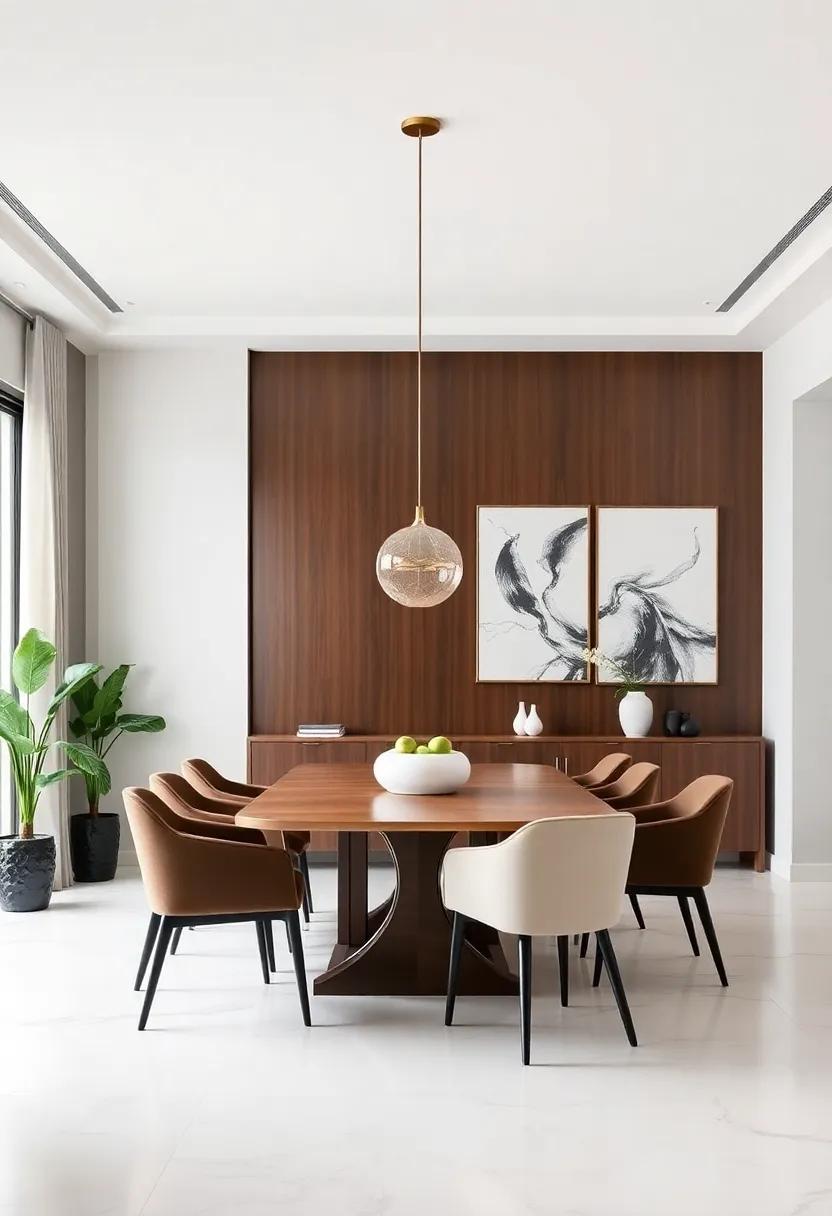
Elevate your dining space by embracing trends that draw inspiration from cultures around the world.Ethnic textiles, as a notable example, can add warmth and a touch of personality to your dining room. Consider using vibrant, handwoven table runners or cushions featuring intricate patterns that tell a story. Incorporating artisanal ceramics can also enhance the table setting, offering both functionality and a unique artistic flair that reflects craftsmanship from various countries. These elements not only serve as conversation starters but also create an atmosphere that resonates with global influences.
Furniture pieces can act as focal points within the dining room while embodying the elegance of international design. Think about integrating a mid-century modern dining table alongside Scandinavian-inspired chairs that promote comfort without sacrificing style. Another trend is to mix and match materials such as wood, metal, and glass, blending traditional with contemporary aesthetics. This can be beautifully captured by elements like:
- Carved wood accents that reflect asian influences
- Minimalistic decor inspired by Scandinavian sapor
- deep jewel tones reminiscent of Moroccan interiors
To keep the overall design balanced, consider creating a table centerpiece that encapsulates these diverse inspirations. Here’s a simple example for combining styles:
| Element | Source of Inspiration | Color Palette |
|---|---|---|
| Tableware | Mexican Talavera Pottery | Bright Colors |
| Seating | Italian Leather | Neutral Tones |
| lighting | Moroccan Lanterns | Warm Hues |
This approach allows for a cohesive yet eclectic dining room that celebrates global design aesthetics while still feeling warm and welcoming.
Creating Inviting Ambiences with Soft Furnishings and Fabrics
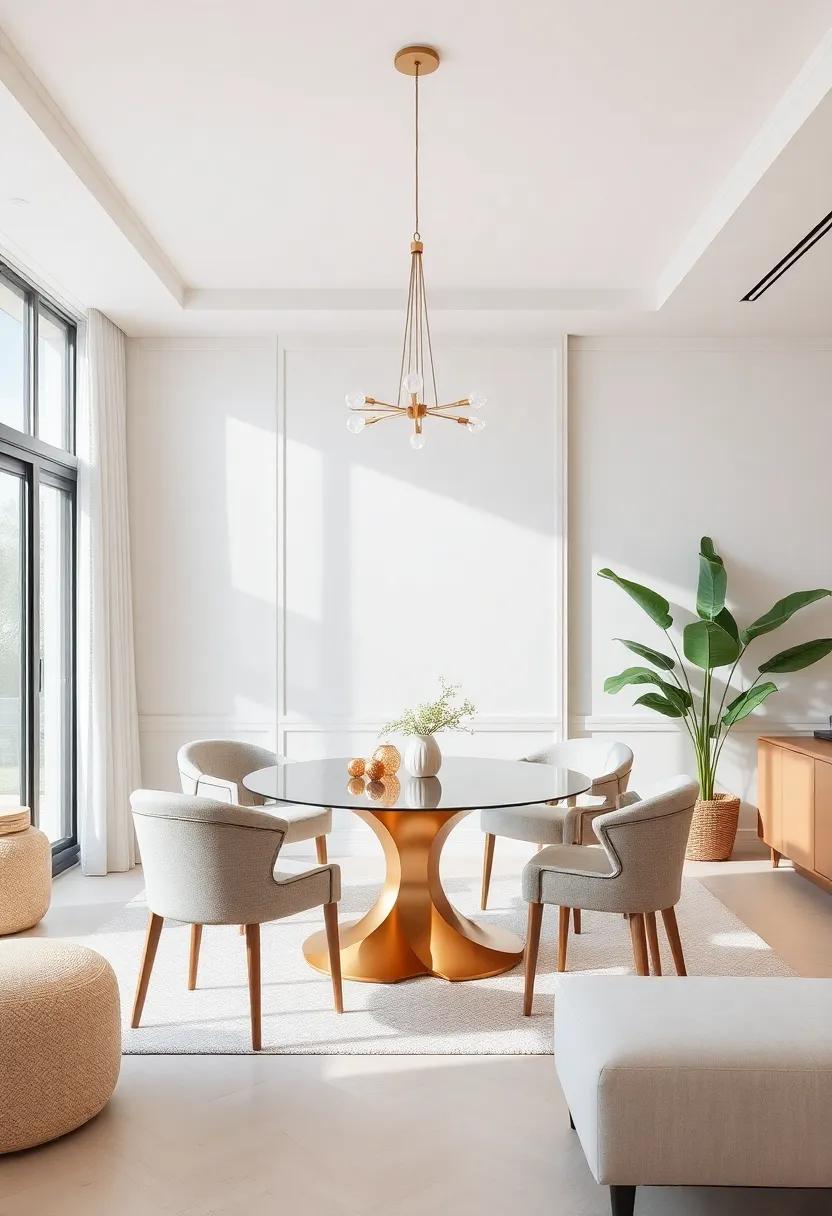
Incorporating soft furnishings and fabrics into your dining room can transform it into a warm and inviting space that encourages both relaxation and conversation. Textiles play a vital role in creating a cohesive look, so consider the following elements when making your selections:
- Upholstered Chairs: Choose plush fabrics that provide comfort while complementing your dining table.
- Statement Table Linens: Opt for table runners or cloths in rich textures or vibrant colors to set the mood.
- Cozy Cushions: Adding cushions to dining chairs can enhance comfort and style, allowing you to linger a little longer.
- Soft Drapes: Light-filtering drapes can add softness, creating an intimate atmosphere while allowing natural light to flow.
When selecting the right textiles, consider a mix of patterns and textures to add depth and interest. A well-curated palette can elevate even the simplest of dining spaces.Here’s a brief overview of fabric types and their effects:
| Fabric Type | Effect |
|---|---|
| Velvet | Luxurious and inviting |
| Linen | Relaxed and airy |
| Wool | Warm and cozy |
| Cotton | Casual and versatile |
By thoughtfully integrating these elements, you can create a dining area that is not only a feast for the eyes but also a place where memories are made over shared meals.
As we wrap up our journey through the diverse landscape of contemporary dining room styles, it’s clear that the modern approach to this essential space transcends mere aesthetics. By embracing elegance and comfort in equal measure, today’s dining rooms have become sanctuaries for connection, celebration, and creativity. Whether you’re drawn to minimalist lines,bold colors,or a rustic-chic vibe,the choices are endless and immensely personal.
In a world where dining is no longer just a routine but an experience, the contemporary dining room stands as a reflection of our evolving lifestyles and tastes. it invites us to gather, share stories, and create memories, all while nestled in an atmosphere that feels uniquely ours. As you embark on your own design journey,remember that the heart of your home should resonate with your individual style—allowing elegance and comfort to dance harmoniously together.
So, whether you’re hosting a lively dinner party or enjoying a quiet meal with loved ones, may your dining room be a true extension of who you are, effortlessly blending beauty with the warmth of togetherness. Let your creativity flourish as you explore the myriad of possibilities that contemporary dining rooms have to offer.Happy decorating!


